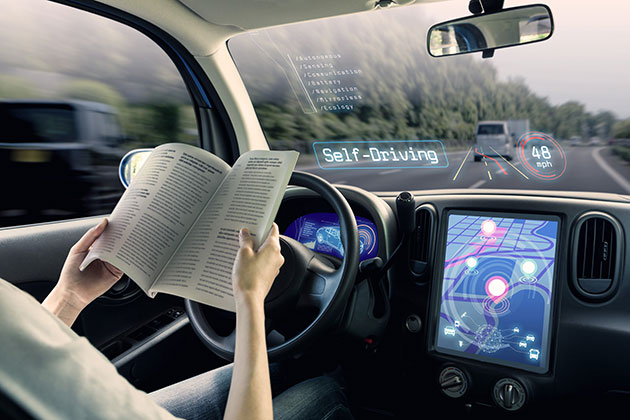For years, Americans have been increasingly focusing on how much technology can do for us, and countless studies have been run in an attempt to quantify that aide in our everyday lives.
But a batch of numbers newly released by the California Department of Motor Vehicles (DMV) flips the analysis entirely, positing the technology as the default and tracking how many times a human must step in to help.
Out of 459,695 test miles driven by automated vehicles in California last year, the self-driving technology in those cars was disengaged a total of 2,704 times.
They’re possibly the first set of statistics in the coming sea change regarding who—or what—will be responsible for driving our cars in the future.
The numbers come from the 7 major companies that ran self-driving vehicle tests last year, per new California rules requiring annual reports on such information from any organization putting autonomous cars on the roads.
Specifically, the 2015 numbers break down to:
- Mercedes-Benz—967 disengagements in 1,337 miles driven.
- Bosch—625 disengagements in 935 miles driven.
- Delphi—405 disengagements in 16,662 miles driven.
- Google—341 disengagements in 424,331 miles driven.
- Volkswagen—260 disengagements in 14,945 miles driven.
- Nissan—106 disengagements in 1,485 miles driven.
- Tesla—0 disengagements, in an undisclosed number of miles driven.
The auto-drive technology could be “disengaged” either by the car’s central computer or with a human override, and the reported figures represent a number of different situations where the self-driving feature was turned off.
Google, whose cars by far saw the most time on the streets last year, also provided the most information on the causes of their technology disengagement.
The company reported that 272 of the disengagements were caused by “anomalies” such as broken wires, incorrect GPS readings or in the monitoring of “key functions like steering and braking.” In these cases, the company said, the decision to transfer responsibility to the driver was made by the machine itself.
In 69 cases with Google, the individual sitting in the somewhat-anachronistically named driver’s seat was forced to take the wheel—however, the company added that only 13 of those situations were to prevent a crash.
The other companies involved were far more imprecise in their disengagement evaluations, offering only vague comments such as “driver was uncomfortable,” “technology evaluation management,” or “autonomous control shut off.”
Still, according to the report, the number of miles between disengagement of the self-driving technology grew as the tests persisted—from a rate of about once every 785 miles in the fourth quarter of 2014 to once every 5,318 miles in the fourth quarter of 2015.
No matter how great the apparent improvement to the technology has become over the past year, however, it’s clear it will still be some time before the cars are made available to the public.
The report was released in the wake of a precedent-setting regulation proposal by the California DMV which requires all autonomous vehicles to have a driver and recommends against prototypes like those favored by Google, which have neither steering wheels nor pedals.
The rules have yet to be set in stone, but the tech giant nevertheless responded negatively to them when they were released in December, accusing the state agency of “writing a ceiling on the potential for fully self-driving cars.”
“My older son is 12 years old,” Chris Urmson, the head of Google’s self-driving car program, has said in the past. “In four years, he gets a driver’s license. We don’t want him to have to.”
To achieve that ambitious goal, it seems, Urmson and the others involved in self-driving cars may need to have even better numbers in next year’s report.
